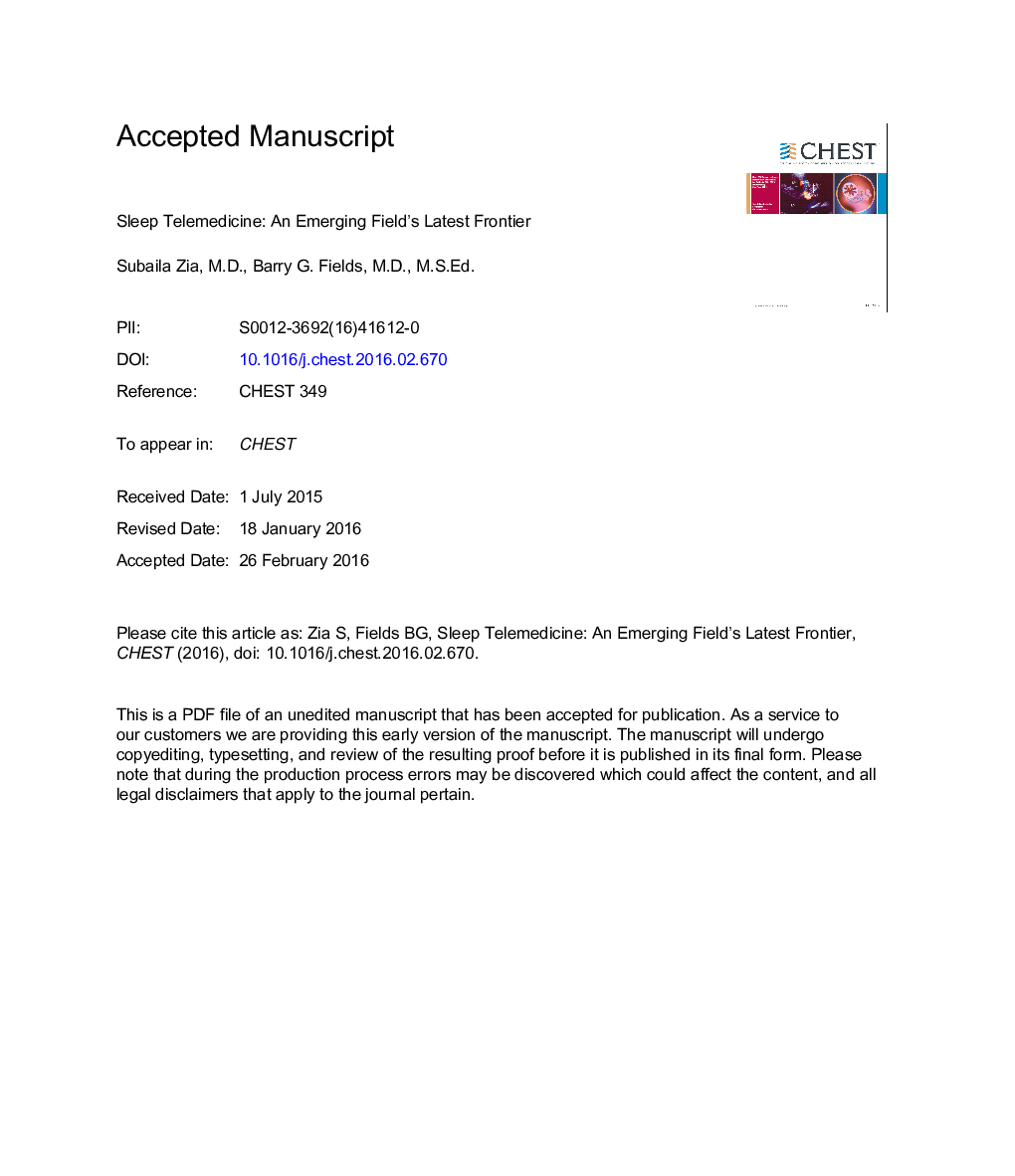| Article ID | Journal | Published Year | Pages | File Type |
|---|---|---|---|---|
| 5952407 | Chest | 2016 | 25 Pages |
Abstract
There is a widening gap between sleep provider access and patient demand for it. An American Academy of Sleep Medicine position paper recently recognized sleep telemedicine as one tool to narrow that divide. We define the term sleep telemedicine as the use of sleep-related medical information exchanged from one site to another via electronic communications to improve a patient's health. Applicable data transfer methods include telephone, video, smartphone applications, and the Internet. Their usefulness for the treatment of insomnia and sleep-disordered breathing is highlighted. Sleep telemedicine programs range in complexity from telephone-based patient feedback systems to comprehensive treatment pathways incorporating real-time video, telephone, and the Internet. While large, randomized trials are lacking, smaller studies comparing telemedicine with in-person care suggest noninferiority in terms of patient satisfaction, adherence to treatment, and symptomatic improvement. Sleep telemedicine is feasible from a technological and quality-driven perspective, but cost uncertainties, complex reimbursement structures, and variable licensing rules remain significant challenges to its feasibility on a larger scale. As legislative reform pends, larger randomized trials are needed to elucidate impact on patient outcomes, cost, and health-care system accessibility.
Keywords
VAMCIRTAPPCMSHSATCVTPAPCBT-ISDBINPAASMAmerican Academy of Sleep MedicineISIsleep-disordered breathingInsomniaTautreatment as usualCognitive behavioral therapy for insomniaInsomnia severity indexPositive airway pressureCenters for Medicare and Medicaid ServicesVeterans Affairs Medical CenterApplication
Related Topics
Health Sciences
Medicine and Dentistry
Cardiology and Cardiovascular Medicine
Authors
Subaila MD, Barry G. MD, MSEd,
